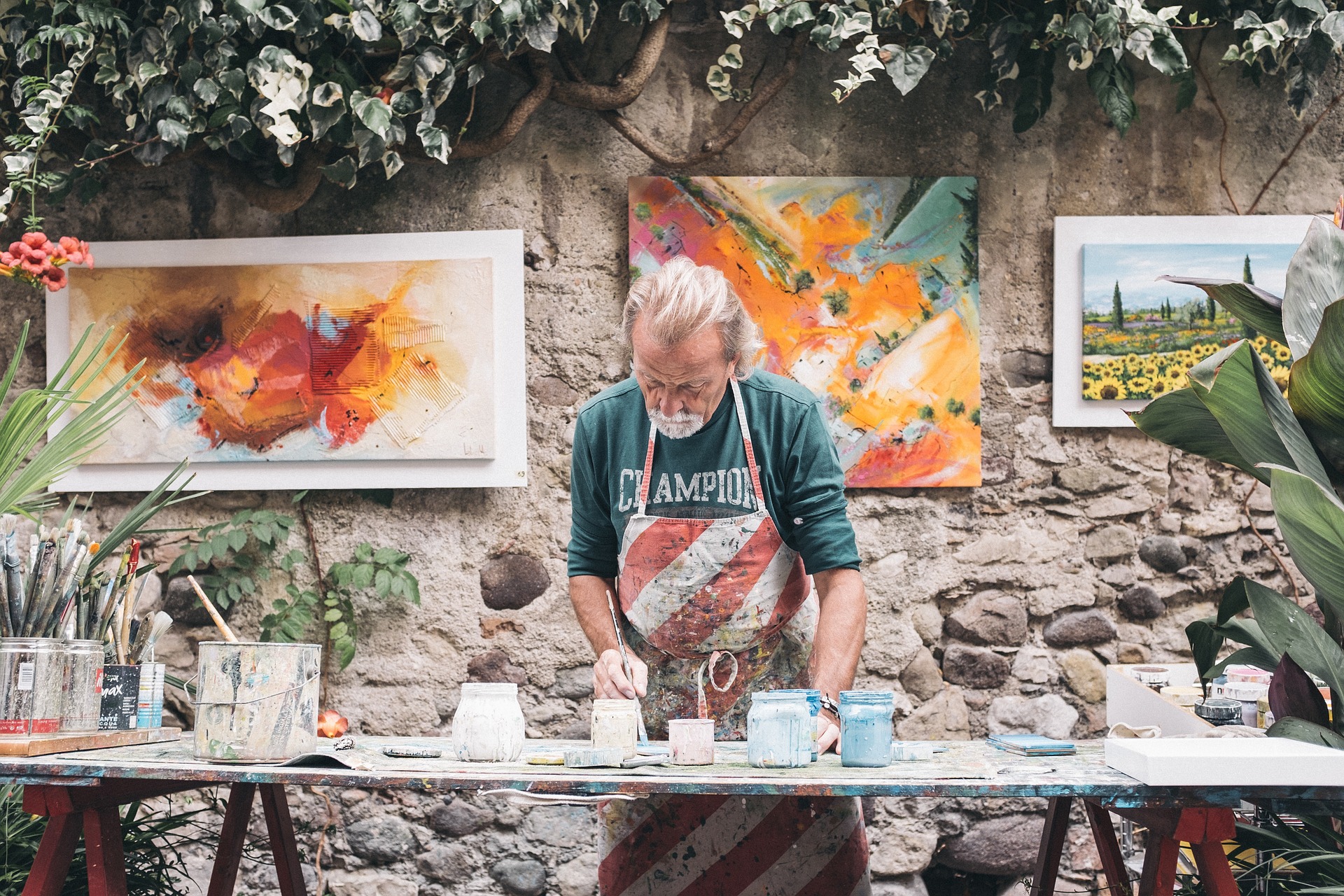 Submitted by Dr. Arati Mishra on
Submitted by Dr. Arati Mishra on

Image by Free-Photos from http://Pixabay.com
Healing is a complex process. In an ailing body, restoration of the balance between the state of catabolism as against anabolism determines the healing process. Usually, the parameters of healing are based on the extraneous measures employed, genetic make-up, and environmental and social variables. However, an illness also is an expression of an inner disharmony. Hence the attitude of the patient towards recovery is also an important perspective to be considered. If one can know how to tap one’s own inner resources, then this itself can facilitate healing.
One of the ways in which one’s inner resources can be tapped is through the medium of creative arts.
Creative arts balance the frailty and finitudes through one’s inner resources. Essentially they achieve a harmony in the ‘whole’ being and instill a positive attitude towards healing. This energizes the body’s recuperative potential.
The following creative arts have been examined briefly with regard to their therapeutic use:
Music and dance, floriculture and horticulture, sketching and painting, reading literature or scriptures and watching nature.
Music with its rhythm and melody brings about a synchronization of the brain cell activity. There is a summation effect and an alpha rhythm predominates which gives a trance-like feeling. This can be very enjoyable and relaxing. Moments of ecstasy that come about hasten the recuperative processes.
The literature has a number of reports on behavioral changes, enhancement in performance and improvement in mental functioning related to the therapeutic use of music.
Dancing has emotive display of basic human emotions. The poses and gestures may involve the whole human body and depict the contexts of a narrative story or drama. Earlier, it was performed in temples in front of gods and goddesses and would portray the relationship of the divine and its creation. Its rhythmicity and the ritual of body movements, performed in a orderly and disciplined manner, when carried out in the right environment, fully absorbs and satisfies the person.
Folk dancing is group dancing, probably specific for each cultural group. It is commonly performed during festivals, seasonal changes or just for joy. It brings in social nearness and has an abreactive effect.
Plants provide living experiences. Seed germination, blossoming of flowers and then withering gives us insights into the biological life-cycle. Thus the art of caring for a plant gives an insight for providing these with basics as manure (nourishment), sunlight, and water (milieu) so that they can grow. The grandeur of a garden reflects the labours of its gardener. Similar are the experiences of human existence. Care and love enhance the meaningful existence of any living being. Again being outdoors, there is a certain amount of physical activity and closeness to nature. There occurs an enhancement of one’s potential in creating something beautiful in nature. An involvement in this process teaches one many things in life. As one gets involved, feelings of creativity, care, mental peace and relaxation occur.
Besides originality (based on thoughts and one’s imagination), sketches reflect one’s emotions. The mind too is exercised.
Painting provides the person with an opportunity to express what he perceives about this world, its people and their emotions. It is a display on the canvas of one’s personality which may not be definable in words. Even more the choice of colours indicates a melancholic or animated disposition. It is a reflection of one’s subconscious attitudes to the world around. Some paintings depict evocative colour abstraction of nature, the earth, the sky and water. The balance between the elements of nature and human depicts the yang and yin of the person.
The emotions can be understood by the curvature of the lines, free space, movements of elements and colours. Interpreted in another way, paintings are reflective and make one recognise the relationship with nature, realise human characteristics and set in process the search for a meaning of one’s existence.
Selected reading material can be employed as adjuncts to other therapeutic measures. While reading, one identifies oneself with the subject of the story. There is on one side an involvement and at the same time, it allows a certain distance. Thus literature can become something that has maximal accessibility but minimal defensiveness. Scripture reading can make one look inwards and bring about a better understanding about the self.
Research has shown a great deal of attitudinal changes following pursuance of literary work of great authors. There is scope for self- development. It becomes an instrument for restoring morale and looking at life experiences in a positive perspective. Scientific studies have shown that those with faith recover from an illness or operation faster than the non-believers.
To observe nature is to connect with its vastness, its subtlety, its beauty and its power. Nature as a whole is self-organising and very well-ordained. Watching mountains for their majestic heights and nearness to heaven, evoke pique for ascendance. Similarly in the woods, the uprightness of trees is inspiring. The vastness of the sea can help one in widening one’s consciousness.
Watching nature one can learn more about life than from any other source. Nature holds before us the picture of restoration and renewal. Realising the divinity in nature helps one develop from within.
There is a pleasure in the pathless woods,
There is a rapture on the lonely shore,
There is society, where none intrudes,
By the deep Sea and Music in its roar;
I love not Man the less, but Nature more,
From these our interviews, in which I steal
From all I may be, or have been before,
To mingle with the Universe, and feel
what I can ne’er express —
yet can not all conceal.
Byron (1)
Dr. M.M.S. Ahuja
http://www.namahjournal.com/doc/Actual/Creative-arts-in-therapeutic-use-vol-5-iss-2.html
Reference
1. Lord Byron. The selected poetry of Lord Byron, (ed.) L.A.Marchand. New York; The Modern Library, 1951, p.158.
- 447 reads